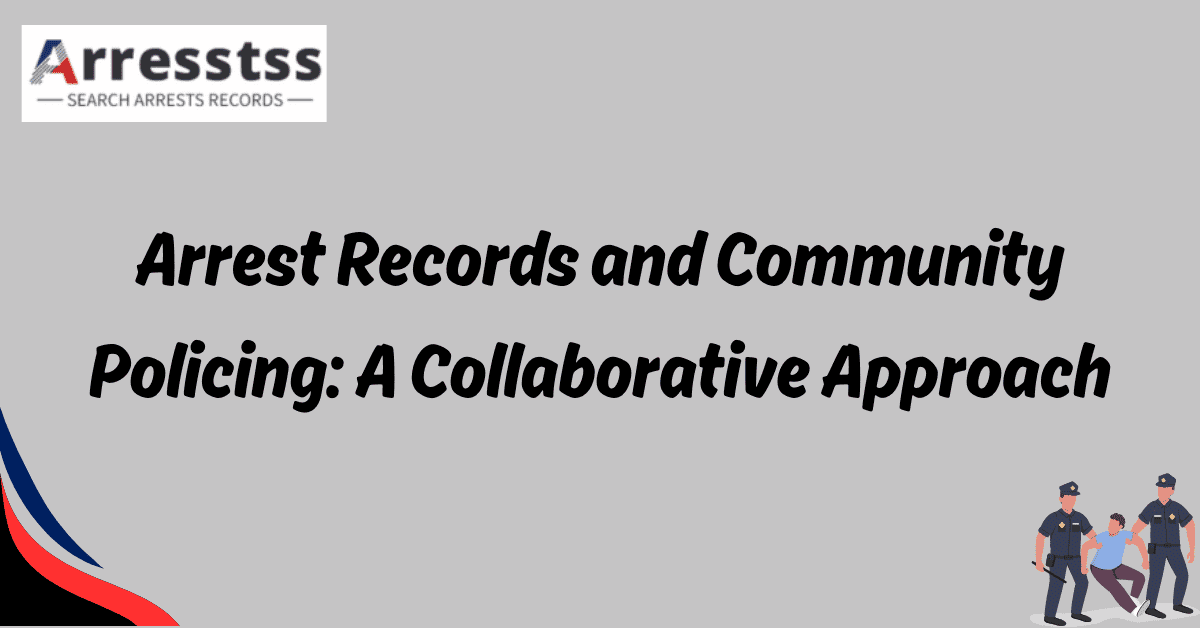Arrest Records and Community Policing: A Collaborative Approach
In the realm of law enforcement and community relations, the intersection of arrest records and community policing represents a pivotal junction for fostering trust and accountability. This collaborative approach underscores the imperative for law enforcement agencies to engage with local communities transparently and ethically. By leveraging arrest records as a catalyst for dialogue and understanding, communities and police departments can forge stronger partnerships aimed at enhancing public safety while respecting civil liberties.
Role of Arrest Records in Law Enforcement
Arrest records play a crucial role in the field of law enforcement, providing valuable information about individuals who have been taken into custody for alleged criminal activities. These records serve as documentation of an individual’s involvement in criminal behavior and are used for various purposes, such as background checks, investigations, and statistical analysis.
Arrest records are an essential tool for law enforcement agencies to identify and apprehend individuals who pose a threat to public safety. By maintaining a comprehensive database of arrest records, law enforcement officials can quickly access information about a person’s criminal history, aiding in the investigation and prosecution of crimes.
One of the key benefits of arrest records is their use in background checks, which are conducted by employers, educational institutions, and other organizations to assess an individual’s suitability for various positions. These records provide crucial insights into an individual’s past behavior, allowing employers to make informed decisions regarding employment and ensuring the safety and security of their workforce.
Furthermore, arrest records are essential for statistical analysis, helping law enforcement agencies identify patterns and trends in criminal activities. By analyzing arrest data, law enforcement officials can allocate resources effectively, develop targeted crime prevention strategies, and assess the effectiveness of their policing efforts.
Collaborative Approach of Community Policing
Community policing involves a proactive approach to crime prevention and building relationships between law enforcement officers and the communities they serve. It focuses on developing partnerships and engaging with community members to identify and address the root causes of crime.
This collaborative approach recognizes that crime prevention is not solely the responsibility of law enforcement but requires the active participation and support of the community. By working together, law enforcement officers and community members can create a safer and more secure environment.
Community policing emphasizes the importance of transparency, communication, and trust between law enforcement agencies and the community. It promotes a shared responsibility for crime prevention, where residents are encouraged to report suspicious activities and work alongside law enforcement to create safer neighborhoods.
Through community policing initiatives, law enforcement officers can establish a presence in the community, becoming familiar with the residents and their concerns. This approach fosters positive relationships, allowing law enforcement to gain valuable insights from community members and tailor their policing strategies to address specific community needs.
Synergy Between Arrest Records and Community Policing
When examining the relationship between arrest records and community policing, it becomes evident that these two elements work together to ensure public safety. The availability and analysis of arrest records provide law enforcement agencies with essential information to identify and apprehend individuals involved in criminal activities.
Community policing, on the other hand, creates an environment where residents feel empowered to report suspicious activities and work with law enforcement officers to prevent and address crime. By fostering trust and collaboration, community policing initiatives enhance the effectiveness of arrest records, enabling law enforcement agencies to take proactive measures in maintaining law and order.
The collaborative approach between arrest records and community policing promotes a comprehensive and holistic approach to crime prevention. It recognizes the importance of addressing the root causes of crime while utilizing available resources and information to identify and apprehend individuals involved in criminal activities.
Benefits of a Collaborative Approach
A collaborative approach between arrest records and community policing offers several benefits for maintaining law and order within a society. Firstly, it enhances the efficiency and effectiveness of law enforcement efforts by ensuring that resources are allocated based on accurate and up-to-date information.
Secondly, a collaborative approach builds trust and confidence between law enforcement agencies and the community. When residents feel safe and supported by law enforcement officers, they are more likely to report crimes and cooperate in investigations, leading to higher crime clearance rates and a safer community.
Additionally, a collaborative approach promotes community engagement and empowerment. By involving community members in crime prevention initiatives, they become active stakeholders in ensuring the safety and security of their neighborhoods.
Lastly, a collaborative approach helps address the underlying causes of crime. By working together to identify and address community concerns, law enforcement agencies and community members can implement targeted interventions and support programs that reduce the risk factors associated with criminal activities.
FAQ’s
What are arrest records?
Arrest records are official documents that provide information about individuals who have been taken into custody for alleged criminal activities. These records serve as documentation of an individual’s involvement in criminal behavior and are used for various purposes, such as background checks, investigations, and statistical analysis.
Arrest records typically include details such as the person’s name, age, address, the nature of the offense, date of arrest, and other relevant information. They are created and maintained by law enforcement agencies, and their accessibility may vary depending on jurisdiction and privacy laws.
These records are important tools for law enforcement and judicial systems as they help in determining the criminal history of an individual, evaluating the potential risk they may pose, and ensuring public safety.
How can arrest records benefit the community?
Arrest records play a crucial role in maintaining public safety and promoting a collaborative approach to law enforcement. By providing valuable information about individuals who have engaged in criminal activities, these records help communities make informed decisions and take necessary precautions.
Having access to arrest records allows community members to be aware of potential risks and take appropriate measures to protect themselves and their loved ones. It enables employers to conduct background checks to ensure the safety and integrity of their workforce. Additionally, these records aid in investigations, providing leads and evidence that can contribute to solving crimes and bringing offenders to justice.
Furthermore, arrest records can be used for statistical analysis, helping law enforcement agencies identify patterns and trends in criminal behavior. This information can be utilized to develop targeted crime prevention strategies and allocate resources effectively.
Community policing is an approach to law enforcement that emphasizes collaboration and partnerships between law enforcement officers and the communities they serve. It aims to prevent crime by addressing its underlying causes and building trust and relationships within the community.
By engaging with community members, law enforcement officers gain a better understanding of the specific needs and concerns of the community. This enables them to tailor their strategies and allocate resources accordingly, resulting in more effective crime prevention and response.
Community policing encourages proactive measures such as neighborhood watch programs, community events, and educational campaigns to promote awareness and foster a sense of responsibility among residents. It also prioritizes problem-solving by addressing the root causes of crime, such as poverty, substance abuse, and social inequality.
Arrest records and community policing are interconnected in a collaborative approach to maintaining law and order. Community policing relies on the information provided by arrest records to identify individuals who pose a potential risk to the community.
Law enforcement agencies utilize arrest records to conduct background checks during the recruitment process, ensuring that officers entrusted with community safety have no history of criminal behavior. This helps maintain the integrity of community policing efforts.
Moreover, the accessibility of arrest records to the community promotes transparency and accountability. It allows residents to be aware of criminal activities in their neighborhoods and report suspicious behavior to law enforcement. This active involvement of the community enhances the effectiveness of community policing initiatives.
The collaborative approach between arrest records and community policing recognizes that crime prevention is not solely the responsibility of law enforcement but requires the active participation and support of the community.
Community members can contribute to maintaining law and order by reporting suspicious activities to law enforcement, being proactive in implementing crime prevention measures and participating in community policing initiatives. By building strong relationships with law enforcement officers and fostering trust, residents can create safer neighborhoods.
Additionally, community members can support crime victims, provide information or witnesses in criminal investigations, and participate in community programs aimed at reducing crime and improving quality of life.







